
Stative Verb Definition, List and Examples of Stative Verbs
Stative Verbs List Some verbs are only (or mostly) used in simple tenses, and are not used in continuous tenses. An example of a simple tense is the present simple, or the past simple. An example of a continuous tense is the present continuous or past continuous. These verbs are called stative, or state verbs.
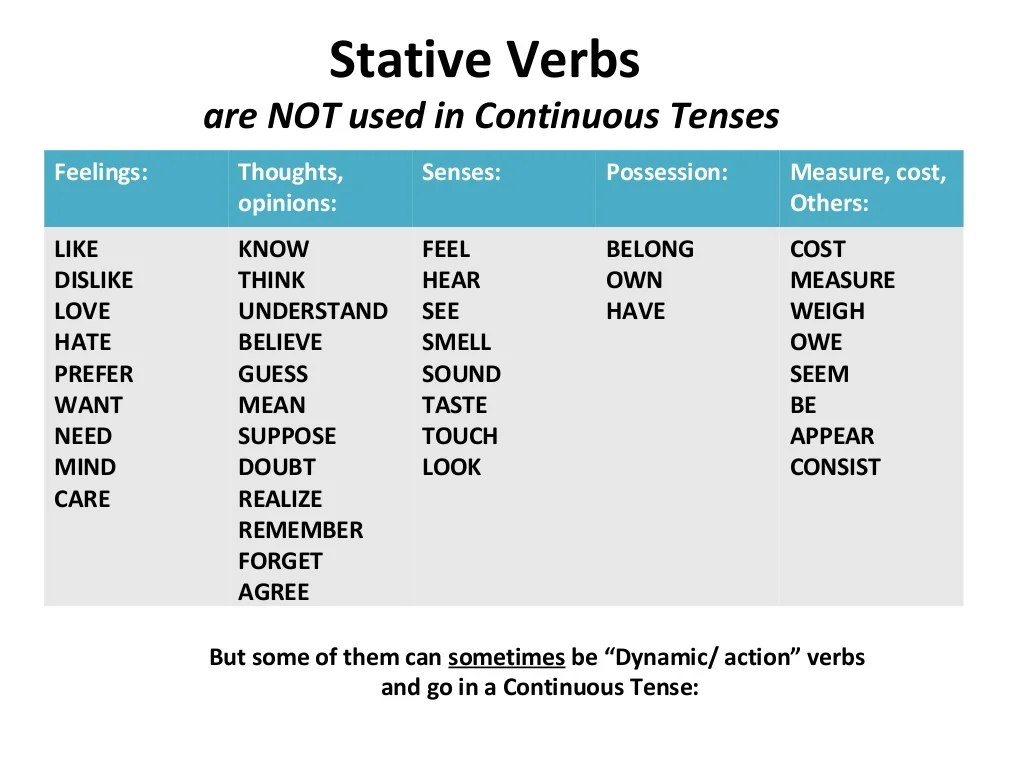
Stative verbs
Here is an extensive list of stative verbs in English. The type of stative verb is indicated in brackets: love (emotion) hate (emotion) hope (emotion) desire (emotion) like (emotion) dislike (emotion) prefer (emotion) adore (emotion) want (emotion) need (emotion) value (emotion) care for (emotion) appreciate (emotion) despise (emotion)
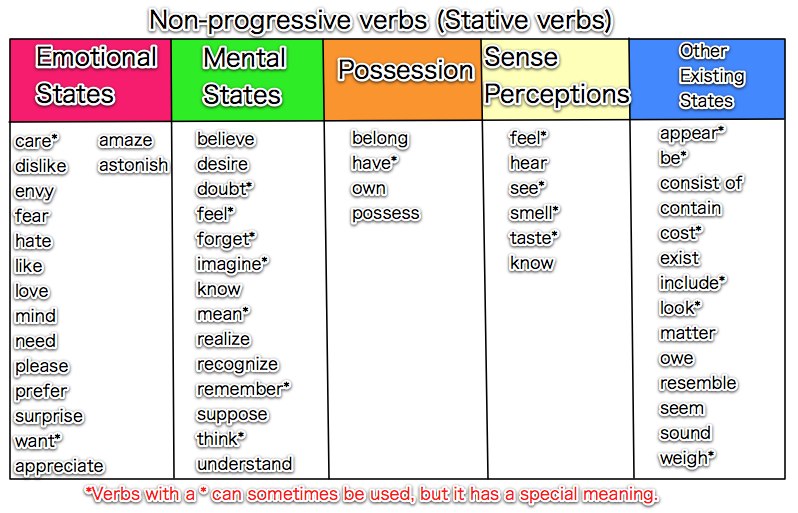
Stative Verbs English Site by Mona Atallah
Parts of speech Commas Commonly Confused Words Stative verbs describe a state, condition, or perception, which can be physical, mental, or emotional (e.g., "have," "believe," "love").
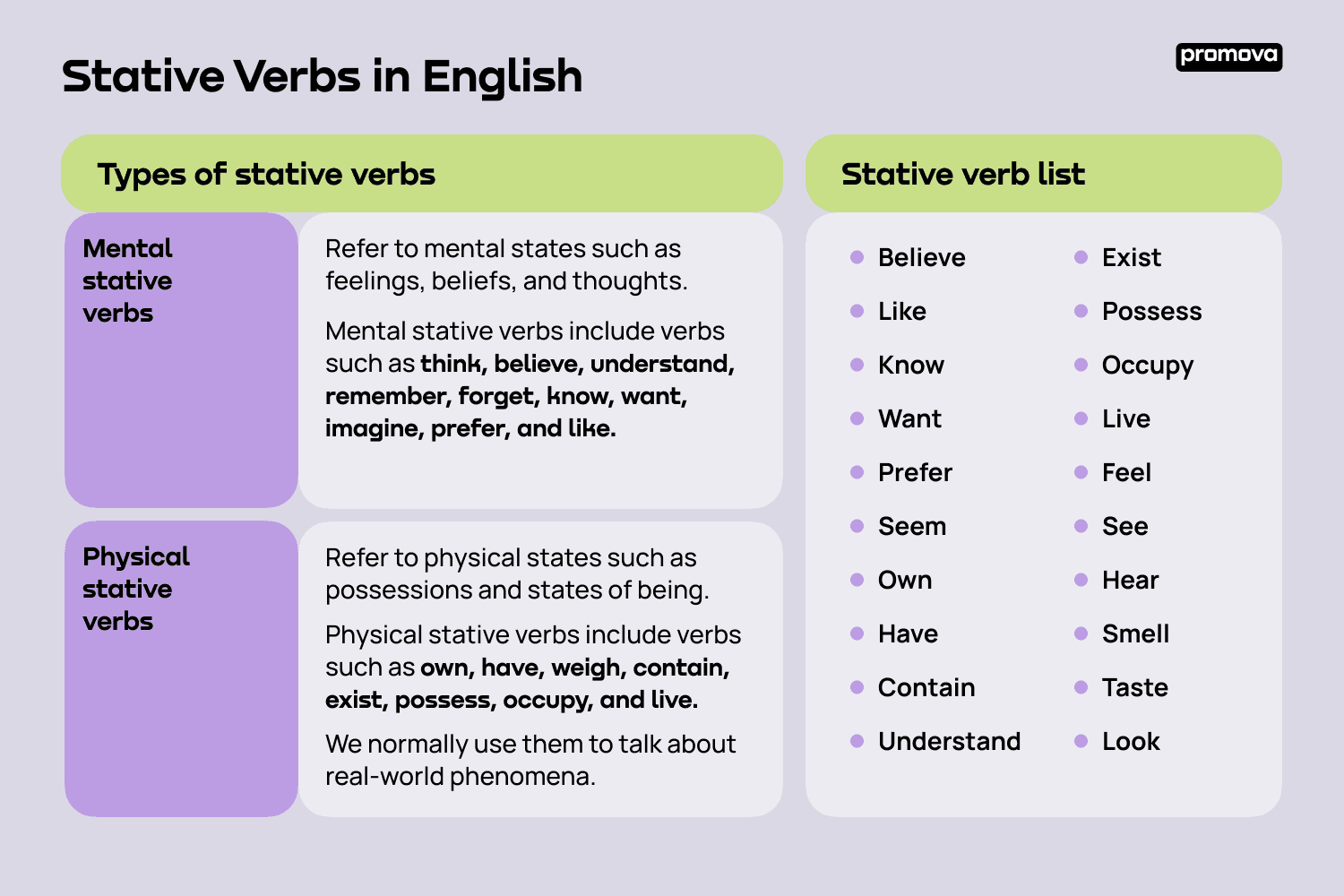
Stative Verbs Promova Grammar
Remember that stative verbs are not action verbs. With a stative verb, there is no activity happening. This is a key point when identifying stative verbs because some of the verbs listed as stative verbs can be action verbs depending on the context. Example 1: The soup tastes lovely. (Here, "tastes" is a stative verb related to sense.)
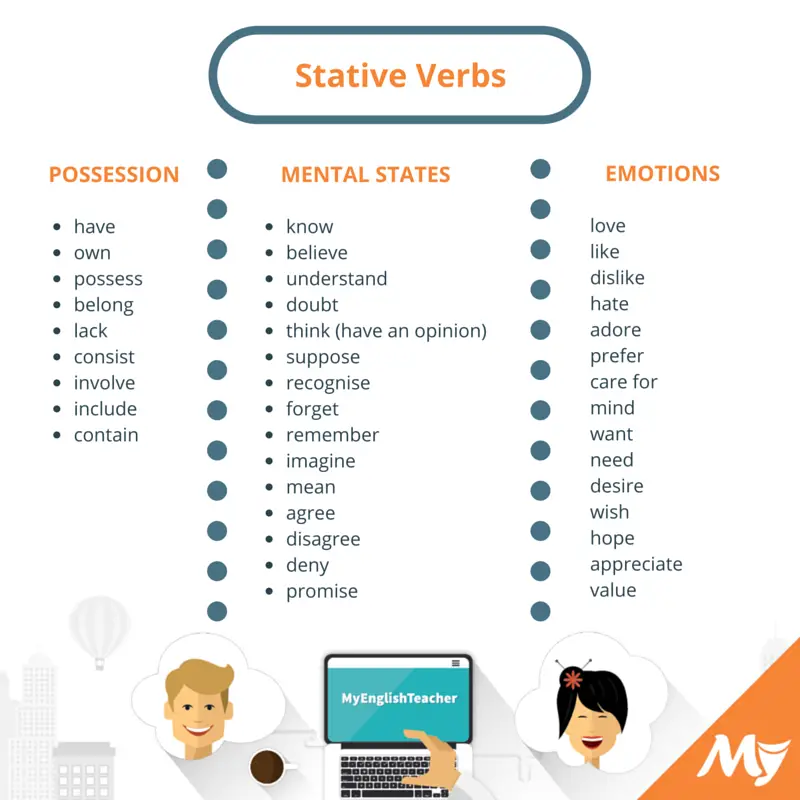
All State Verbs List in English with Examples! MyEnglishTeacher.eu Blog
English grammar Parts of speech (verbs, nouns, adjectives,.) Overview: verbs (drink, done,.) Verbs: stative verbs List of stative verbs List of stative verbs (English verbs that cannot appear in the ing form) Table of contents - list of state verbs On this page you will find the following: Explanation of stative verbs List of stative verbs
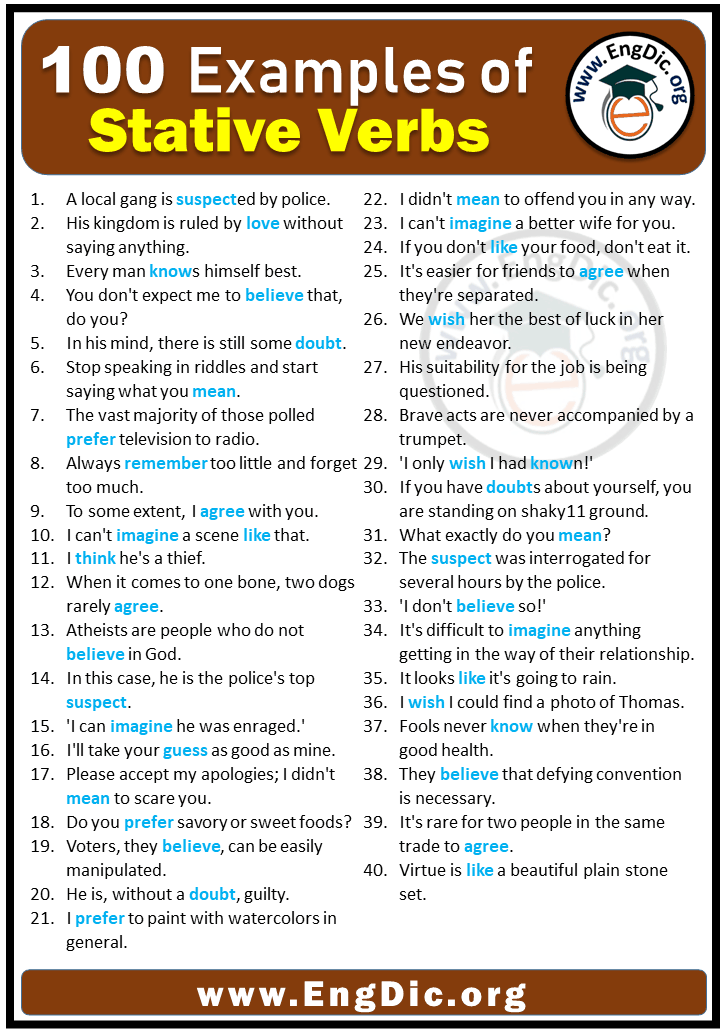
100 Examples of Stative Verbs in Sentences EngDic
Stative Verbs in English by Rebecca Every English sentence must have a . The verb could be classified as dynamic, stative, or both. A describes an action; a describes a condition. This classification is important because it determines how the verb can and cannot be used.
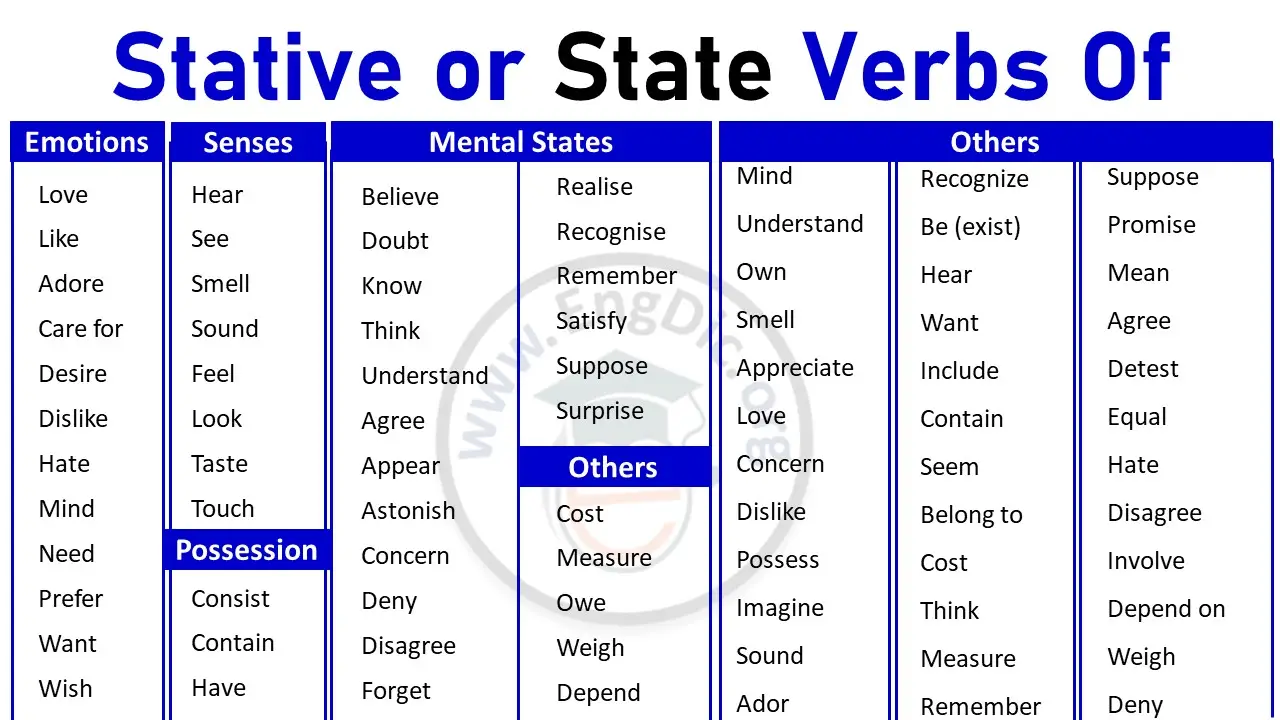
List of stative verbs of Emotions, Senses, Possession in English EngDic
Stative verbs are used to refer to a state or condition rather than an action. Learn more about stative verbs with our lists and examples!
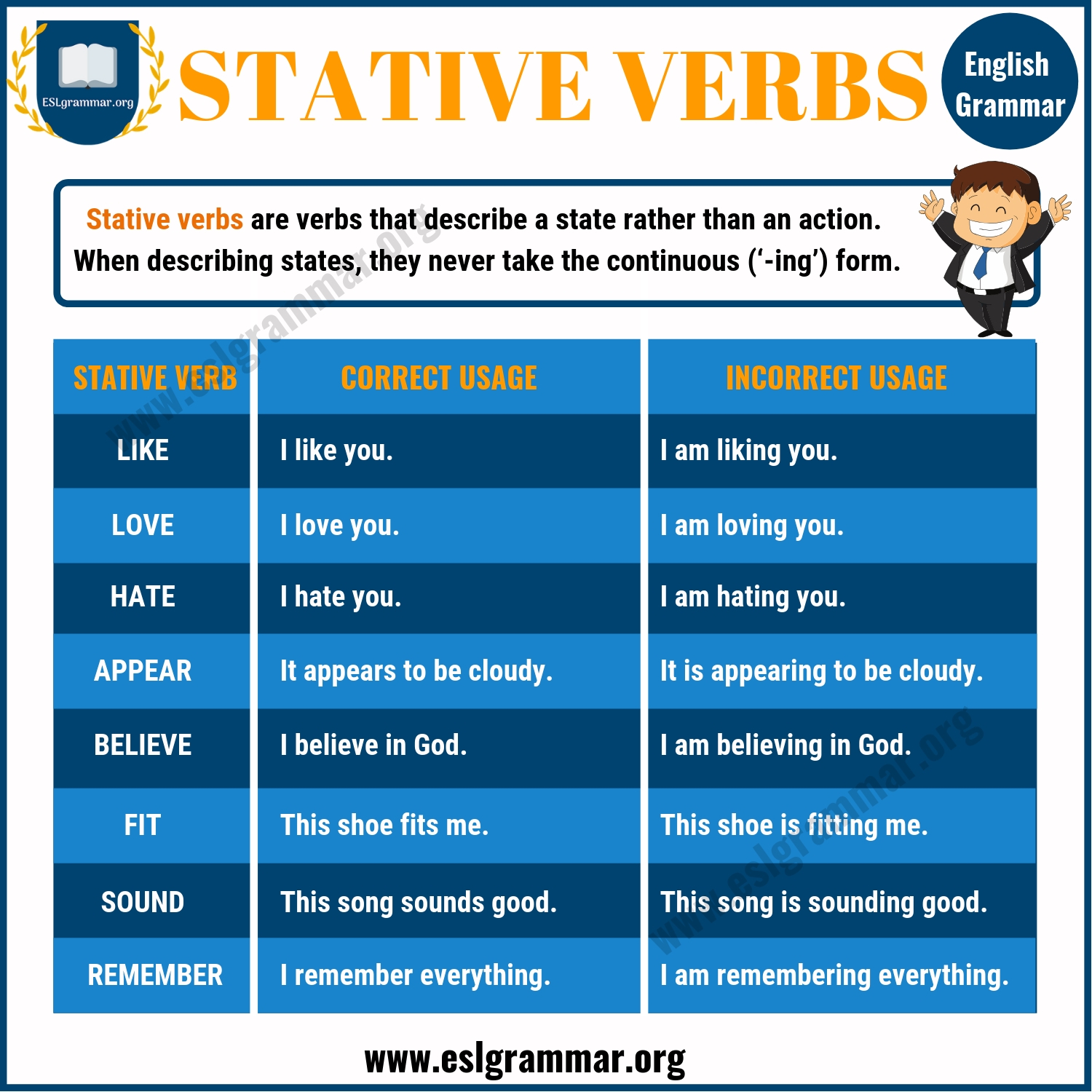
Stative Verbs Definition and Useful Examples in English ESL Grammar
Stative verbs (or state verbs) have the following characteristics: They express a state rather than an action. They refer to thoughts, senses, emotions, feelings, and possessions. They are not usually used in the continuous (progressive) tenses (i.e. with -ing) Some verbs can be used as both state verbs and action verbs.

Stative Verbs Francisco Ochoa Inglés Fácil
Types of stative verbs in English. There are 5 types of stative verbs in English: Emotion stative verbs. Mental or cognitive stative verbs. Possession stative verbs. Senses (perception) Others (conditions and stances) Let's have a look at all types of states and understand them.

8. VERBOS DE ESTADO,STATE OR STATIVE VERBS.B1 MadridBerlínIdiomas
In English grammar, a stative verb is one of the types of verbs that expresses a state or condition instead of an action, according to Merriam Webster. I use them all the time in fiction writing. To recall, a verb is a part of speech that expresses time while showing action, a condition, or the fact that something exists.

Stative Verbs Vocabulary Home
Stative verbs are used to describe a person's mental or emotional state, a physical state, or a relationship between two things. Stative verbs are different from dynamic verbs, which describe an action or process. For example, the verb "run" is a dynamic verb because it describes an action. The verb "be" is a stative verb because it.
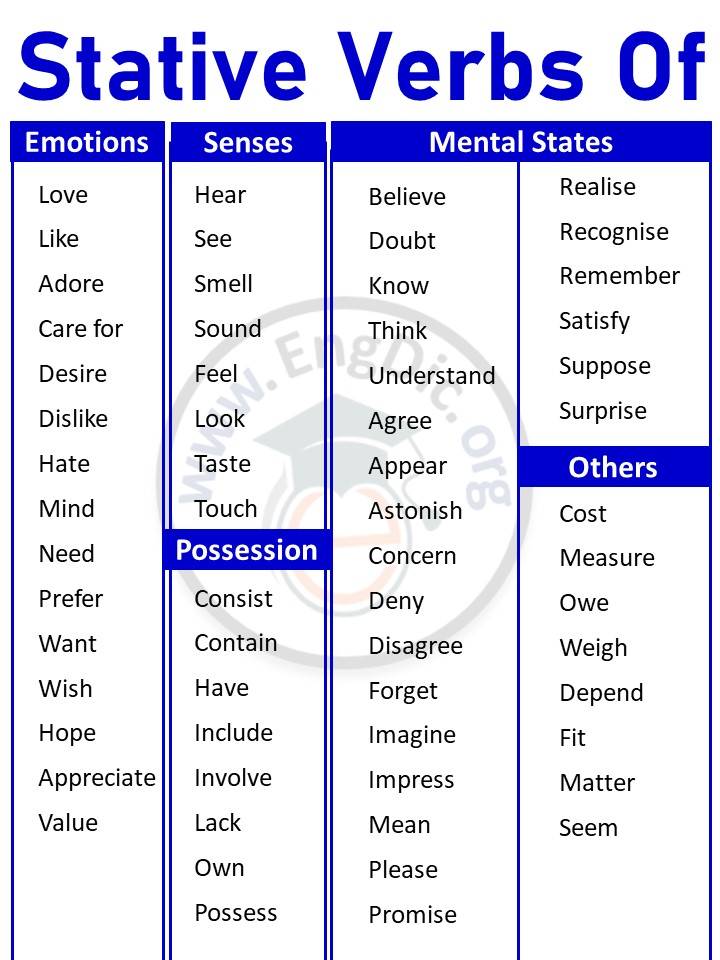
List of stative verbs of Emotions, Senses, Possession in English EngDic
Stative verbs describe a state or condition that is stable or unlikely to change (e.g., " know," "feel," "believe"). Stative verbs usually refer to thoughts, emotions, or senses that the subject of the sentence is experiencing.
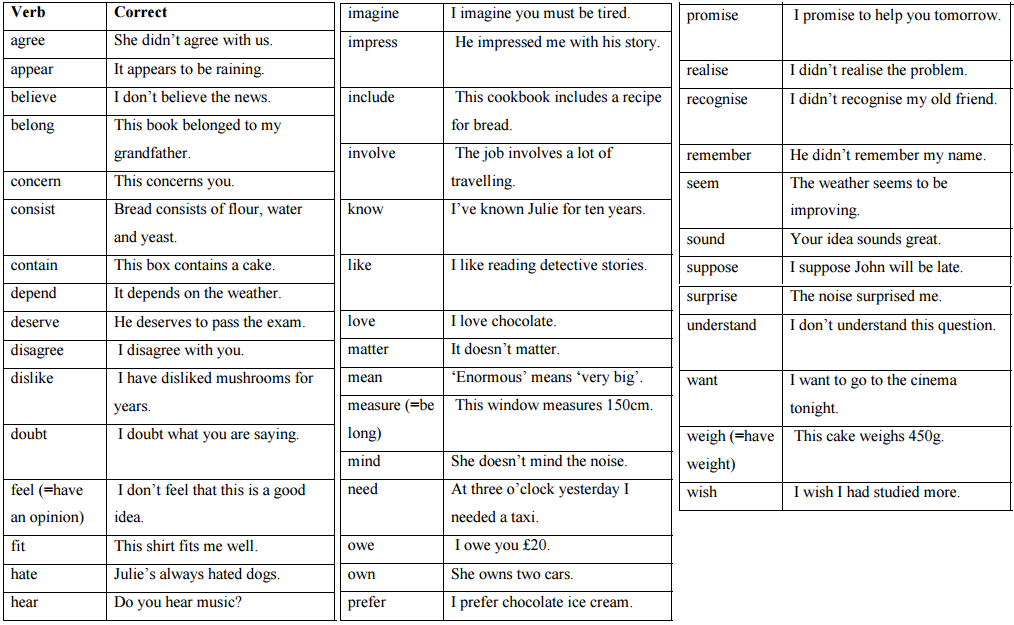
Let's Learn English Statives Verbs
In English grammar, a "stative verb" means that the verb describes a state rather than an action. Stative verbs are sometimes known as "state verbs." Look at these state verb examples: I hate this song. The report contains a great deal of statistical information. I appreciate John's helping in time. I want you to meet my parents.

20 Examples of Stative Verbs in Sentences EngDic
Stative verbs describe states or conditions rather than actions or processes. These verbs often refer to thoughts, emotions, relationships, senses, states of being, and measurements. Examples of stative verbs may include; know, believe, love, hate, seem, own, understand, belong Sentence Structure Involving Stative Verbs
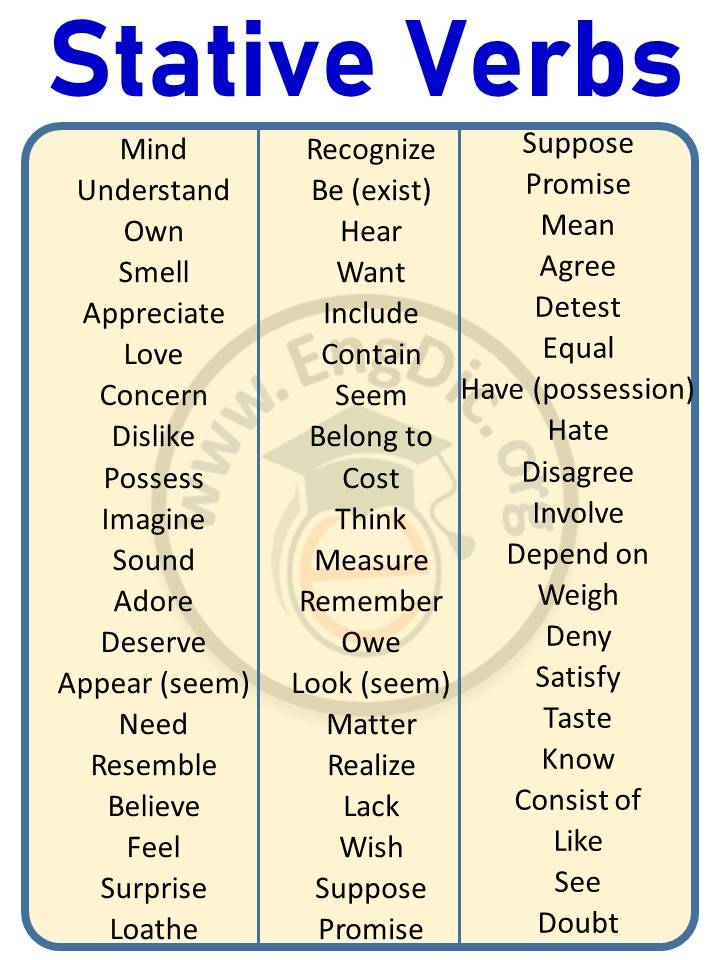
List of stative verbs of Emotions, Senses, Possession in English EngDic
What are stative verbs? Verbs that are predominantly used in continuous tenses and express a state, rather than an action, are called stative verbs. These verbs associate strongly with senses, emotions, feelings, thoughts, and measurements. Some common examples of stative verbs are as follows: depend - I depend on her for most of the work.
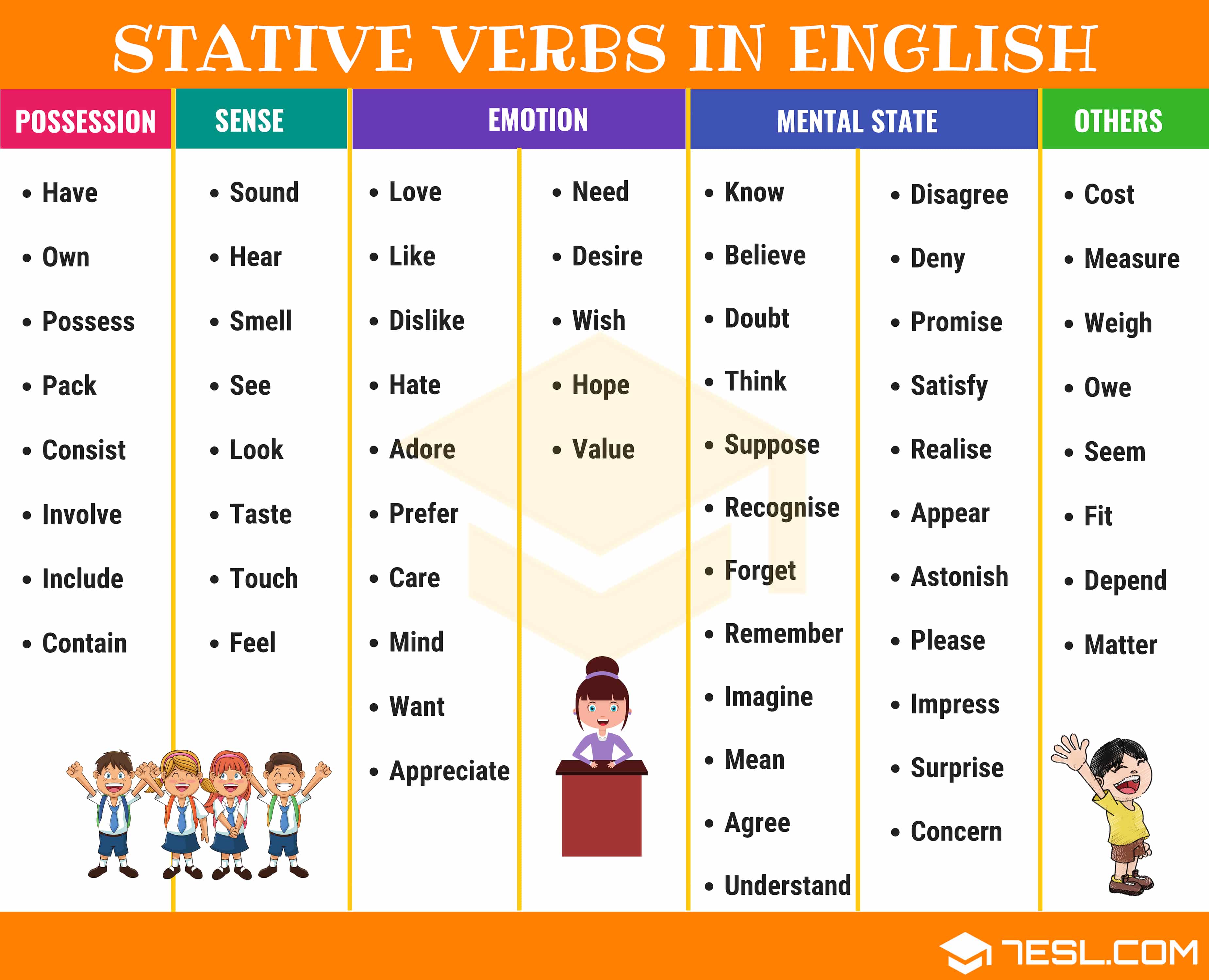
Stative Verb Definition, List and Examples of Stative Verbs • 7ESL
Definition Types Examples What are stative verbs? Stative verbs, also known as state-of-being or state verbs, describe the state or feeling of the subject in a sentence rather than their physical action. Stative verbs involve the senses, emotions, condition, possession, and thought.